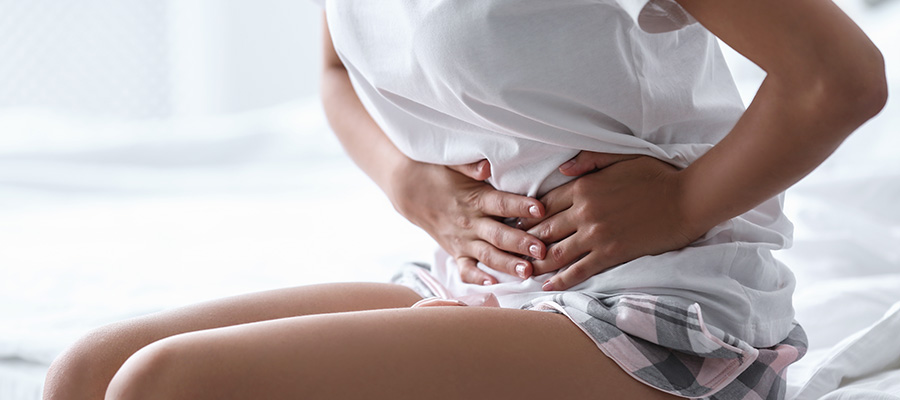


In order to maintain good reproductive and sexual health, women should visit a gynaecologist – a doctor who specializes in females’ reproductive health – for an exam about once per year. Generally, women should begin seeing a gynaecologist at the age of 21, but begin earlier if they become sexually active. After their first visit, women ages 21 to 29 should visit their gynaecologist annually to get a Pap smear. Women between the ages of 30 to 64 should generally visit every other year. Other reasons to visit a gynaecologist include seeking treatment for irregular periods, sexually transmitted infections (STIs), and vaginal infections. Women who are sexually active or are considering becoming sexually active can visit a gynaecologist to learn more about contraceptive methods.
This information is for you if you wish to know more about endometriosis. It may also be helpful if you are the partner or relative of someone with endometriosis.
Endometriosis occurs when cells that normally line the womb (the endometrium) are found elsewhere, usually in the pelvis around the womb, ovaries and fallopian tubes. It is not cancer and it is not infectious. It is a very common condition, affecting between 2 and 10 women out of 100. You are more likely to develop endometriosis if your mother or sister has had it. Endometriosis usually affects women during their reproductive years. It is a long-term condition that can have a significant impact on your general physical health, emotional wellbeing and daily routine.
Common symptoms include pelvic pain and painful, sometimes irregular or heavy periods. It can cause pain during or after sex and can lead to fertility problems. You may also have pain related to your bowels, bladder, lower back or the top of your legs, and experience long-term fatigue. Some women with endometriosis do not have any symptoms. Endometriosis can cause pain that occurs in a regular pattern, becoming worse before and during your period. Some women experience pain all the time but for others it may come and go. The pain may get better during pregnancy and sometimes it may disappear without any treatment.
The exact cause of endometriosis is not known. It is thought to happen when cells that line the womb are carried to the pelvis via the fallopian tubes during your period. These cells respond to your hormones and bleed. Unlike the cells in the womb, which leave your body through the vagina, this blood has nowhere to escape. This can cause pain, inflammation and possibly damage to your pelvic organs.
Endometriosis may be found:
Endometriosis can be a difficult condition to diagnose. This is because:
You will be asked:
The doctor may carry out an internal examination with your consent. This helps to localise the pelvic pain and the doctor can feel for any lumps or tender areas. You will be able to discuss any concerns and you will have an opportunity to ask other questions.
Tests usually include a pelvic ultrasound scan. This may be a transvaginal scan to check the uterus and ovaries. It may show whether there is an endometriotic (chocolate) cyst in the ovaries or may suggest endometriosis between the vagina and rectum. You may be offered a laparoscopy, which is the only way to get a definite diagnosis. This is carried out under a general anaesthetic. Small cuts are made in your abdomen and a telescope is inserted to look at your pelvis. You may have a biopsy to confirm the diagnosis and images may be taken for your medical records. The doctor may suggest treating the endometriosis at the time of your first laparoscopy, either by removing cysts on the ovaries or treating any areas on the lining of your pelvis. This may avoid a second operation. Sometimes, however, the extent of endometriosis found means that you may need further tests or treatment. The procedure, including any risks and the benefits, will be discussed with you. After your operation you be will told the results. You can often go home the same day after a laparoscopy. An MRI scan may be suggested if the condition appears to be advanced.
The options for treatment include those listed below.
This works by reducing inflammation. There are several different ways of helping you relieve your pain. This can range from over-the-counter remedies to prescribed medications from your health practitioner. In more severe situations, you may be referred to a specialist pain management team.
These treatments reduce or stop ovulation (the release of an egg from the ovary) and thus allow the endometriosis to shrink or disappear by decreasing hormonal stimulation. Some hormone treatments that may be offered are contraceptive and will also stop you becoming pregnant. They include:
Other hormonal treatments are available but these are not contraceptives. Therefore, if you do not want to become pregnant, you will need to use a contraceptive as well. Non-contraceptive hormone treatments include:
Surgery can treat or remove areas of endometriosis. The surgery recommended will depend on where the endometriosis is and how extensive it is. This may be done when the diagnosis is made or may be offered later. Success rates vary and you may need further surgery. Your gynaecologist will discuss the options with you fully.
Possible operations include:
If you have severe endometriosis, a specialist team that could include a gynaecologist, a bowel surgeon, a radiologist and specialists in pain management may discuss your treatment options. You may be referred to an endometriosis specialist centre.
Getting pregnant can be a problem for some women with endometriosis. Your gynaecologist can provide you with information about your options.
Some women have found the following measures helpful:
Although there is only limited evidence for their effectiveness, some women may find the following therapies help to reduce pain and improve their quality of life:




Fill in the form below and we will get back to you as soon as we can.